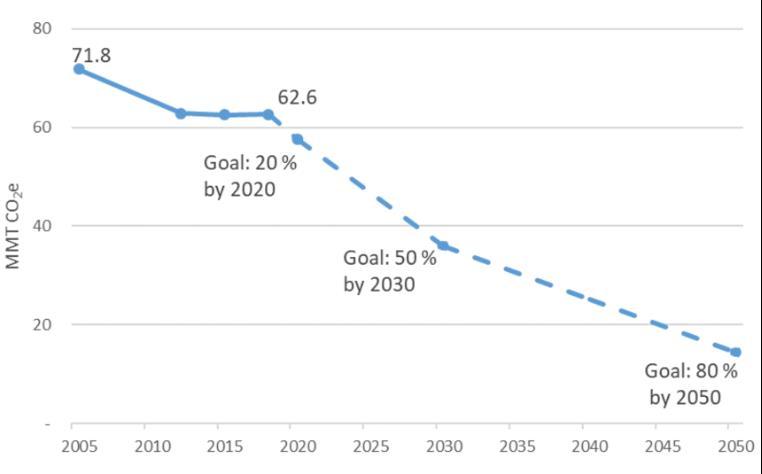
3 minute read
Need to Address Driving and Land Use as well as Cleaner Vehicles
Need to Address Driving and Land Use, as well as Cleaner Vehicles, to Meet Targets
Multiple studies and experience from other regions have shown that vehicle electrification and improved fuel economy, while essential strategies, are not sufficient to meet our climate targets. These studies conclude that reducing auto vehicle miles traveled (VMT) by making better land use policies that reduce the need to drive and by investing in more sustainable and equitable transportation modes is an essential component of lowering our transportation-sector GHG emissions.
National-Level Studies Showing Need to Reduce Driving
Electrification of light-duty vehicle fleet alone will not meet mitigation targets (Milovanoff, Posen, and MacLean, Sep. 2020)5 A recently published landmark academic study in the journal Nature Climate Change finds that reducing U.S. transportation-sector GHG emissions through vehicle electrification is not feasible without reducing driving and car ownership and major increases in fuel economy standards for conventional vehicles.
− Smart Growth America, Driving Down Emissions
Decarbonizing US passenger vehicle transport under electrification and automation uncertainty has a travel budget (Alarfaj, Griffin, and Samaras, Sep. 2020)6 Another study shows that ride sharing and travel demand policies must complement electric cars and clean electricity to increase the likelihood of meeting our climate targets. Driving Down Emissions: Transportation, land use, and climate change (Smart Growth America and Transportation for America, Oct. 2020)7
Smart Growth America’s report shows in plain terms why sprawling development leads to more driving, GHG pollution, and other negative consequences. The report recommends that we: 1. Meet the demand for homes in walkable, compact neighborhoods 2. Build safer, walkable streets 3. Set targets for VMT and GHG emissions reductions 4. Provide transportation options and make transit a priority 5. Prioritize connecting people to destinations
3
Figure 3: U.S. Transportation GHG Emissions and Per Capita Vehicle Miles Traveled
Source: Image from Smart Growth America and Transportation for America. Driving Down Emissions, page 8
Accelerating Decarbonization of the U.S. Energy System, Consensus Study Report (National Academies of Sciences, Engineering and Medicine, February 2021)8 The National Academies convened a panel of experts to investigate how the United States can best decarbonize its energy system by midcentury. The report focuses on the critical first ten years of this effort and identifies five categories of “no regrets” actions. The first is to “Invest in Energy Efficiency and Productivity.” For transportation, this means “…encouraging shifts in transportation from single-occupancy light-duty vehicles (LDVs) to multi-occupancy vehicles, public transit, cycling, and walking…” and also to “reduce travel through telework and mixed-use development.” The strategy also includes fuel economy improvements. While noting past challenges in achieving significant travel mode shifts in the U.S., the report cites previous studies that estimate it can reduce energy use by 10 to 30 percent.9 Transportation efficiency is identified as a priority alongside electric vehicles, not as an afterthought. 20 Percent Reduction in Per Capita VMT and 70 Million EVs Needed by 2030 (Rocky Mountain Institute, January
2021)10, 11
Rocky Mountain Institute’s (RMI) forthcoming analysis has determined that the U.S. will need to reduce its transportation sector emissions 45 percent from 2005 levels by 2030 to meet a climate target consistent with limiting emissions to 1.5 degree Celsius. RMI identified a reachable nationwide EV deployment goal of 70 million EVs on the road (roughly a quarter of today’s passenger vehicle fleet) by 2030. This goal would mean that the vast majority of new cars sales in 2030 would need to be EVs, and it assumes that our electricity is mostly decarbonized by that time. However, there is still a gap in reducing transportation emissions sufficiently to meet our climate targets, which is why RMI found that the U.S. also needs to reduce its per capita VMT in cars, SUVs and pickup trucks by 20 percent from 2019 levels by the year 2030.
4








